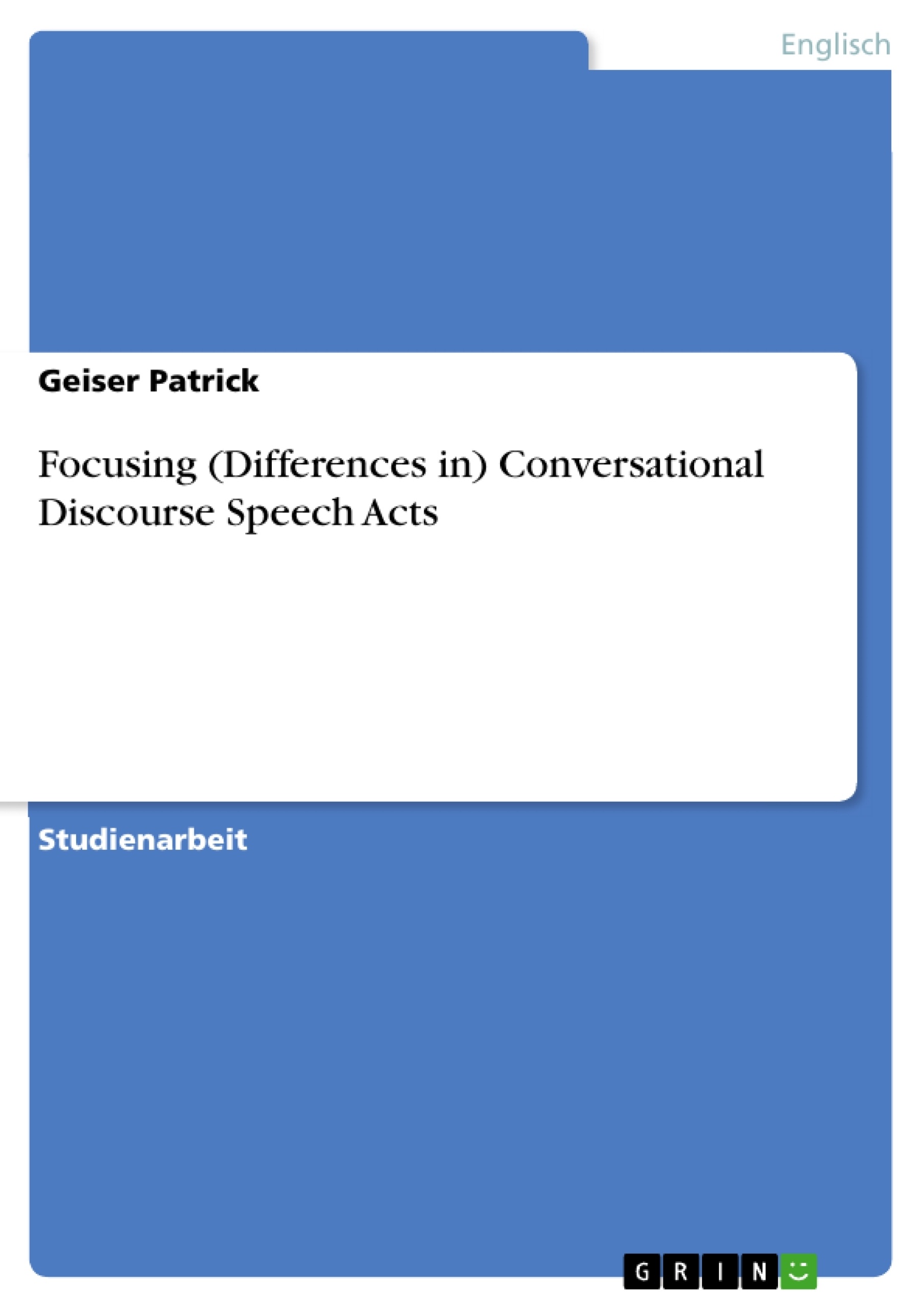Index
I. Introduction
II. Clause as Exchange- The Nature of Dialogue
III. Discourse Analysis According to Michael Stubbs
IV. Surface Cohesion and Underlying Coherence
- Indirection in Speech Acts according to John R. Austin
4.1 Utterances as Actions
4.2 Discourse Acts and Speech Acts
4.3 Identifying Speech Acts
4.4 Speech Acts and Social Roles
V. Speech Act Analysis according to John R. Searle
VI. Conclusion
VII. Bibliography
I. Introduction
Discourse analysis is the general term for a number of approaches to analyze
written or spoken language. Discourse Analysis began to develop in the late
1960s and 1970s in most of the humanities and social sciences and in relation
with semiotics, psycholinguistics, sociolinguistics, and pragmatics.
The object of discourse analysis is defined in terms coherent sequences of
sentences, propositions, speech acts or turns-at-talk. In opposite to traditional
linguistics, discourse analysts not only study language use beyond the sentence
boundary, but also prefer to analyze naturally occurring language use, and not
invented examples.
Whereas earlier studies of discourse mainly focused on the abstract structures
of written texts, many contemporary approaches, especially those influenced
by the social sciences, favour a more dynamic study of spoken talk in
interaction.
Often a distinction is made between local structures of discourse, such as
relations between sentences, and global structures, such as the overall topics
and the schematic organization of the discourse or conversation as a whole.
This term paper will first of all deal with the nature of dialogue and show how
interaction functions. In my second chapter I will have a closer look on
discourse according to how Michael Stubbs, who teaches courses in general
and applied linguistics, lexicology, grammar; semantics and pragmatics, text
and corpus analysis, varieties of English, stylistics, sociolinguistics, the
sociology of language in Britain and language and thought, approaches it.
In the following chapter I will deal with the indirection in speech acts.
Regarding this I will focus on John Austin’s theories of constantives and
performatives as well as his distinction between locutionary, illocutionary and
perlocutionary acts. Thereupon I will focus on John R. Searle’s view which
contrasts Austin’s characterization of speech acts. In my conclusion I will
summarize my chapters as well as compare Austin’s and Searle’s point of
views. [...]
Inhaltsverzeichnis
- I. Introduction
- II. Clause as Exchange- The Nature of Dialogue
- III. Discourse Analysis According to Michael Stubbs
- IV. Surface Cohesion and Underlying Coherence
- - Indirection in Speech Acts according to John R. Austin
- 4.1 Utterances as Actions
- 4.2 Discourse Acts and Speech Acts
- 4.3 Identifying Speech Acts
- 4.4 Speech Acts and Social Roles
- V. Speech Act Analysis according to John R. Searle
Zielsetzung und Themenschwerpunkte
Diese Arbeit befasst sich mit der Analyse von Dialogen und Sprachhandlungen. Sie untersucht, wie Interaktion funktioniert und wie sprachliche Handlungen in sozialen Kontexten ausgeübt werden. Dabei werden verschiedene Theorien zur Sprachhandlungsanalyse von John Austin und John Searle diskutiert.
- Die Natur des Dialogs und die Rolle von Sprachhandlungen in der Interaktion
- Die Bedeutung von Shared Knowledge und Annahmen in der Kommunikation
- Die indirekte Ausübung von Sprachhandlungen nach Austin
- Die Unterscheidung zwischen konstativen und performativen Äußerungen
- Die verschiedenen Arten von Sprachhandlungen nach Searle
Zusammenfassung der Kapitel
- Kapitel I: Einleitung in das Thema der Diskursanalyse und ihre verschiedenen Ansätze.
- Kapitel II: Analyse der sprachlichen Interaktion als Austausch von Informationen oder "Gütern und Dienstleistungen". Es werden die verschiedenen Typen von Sprachrollen und die dazugehörigen Sprachhandlungen (Offer, Command, Statement, Question) erläutert.
- Kapitel III: Die Diskursanalyse nach Michael Stubbs, die sich auf die Organisation von Sprache oberhalb der Satzgrenze konzentriert und die Rolle von Sprache in sozialen Kontexten betrachtet.
- Kapitel IV: Die indirekte Ausübung von Sprachhandlungen nach John Austin. Besonderes Augenmerk liegt auf der Unterscheidung zwischen konstativen und performativen Äußerungen sowie auf den locutionary, illocutionary und perlocutionary acts.
Schlüsselwörter
Diskursanalyse, Sprachhandlung, Dialog, Interaktion, Shared Knowledge, John Austin, John Searle, Konstantiven, Performativen, Illokution, Perlokution, Sozialer Kontext, Sprache in Gebrauch.
- Quote paper
- M.A. Geiser Patrick (Author), 2006, Focusing (Differences in) Conversational Discourse Speech Acts, Munich, GRIN Verlag, https://www.grin.com/document/146065



